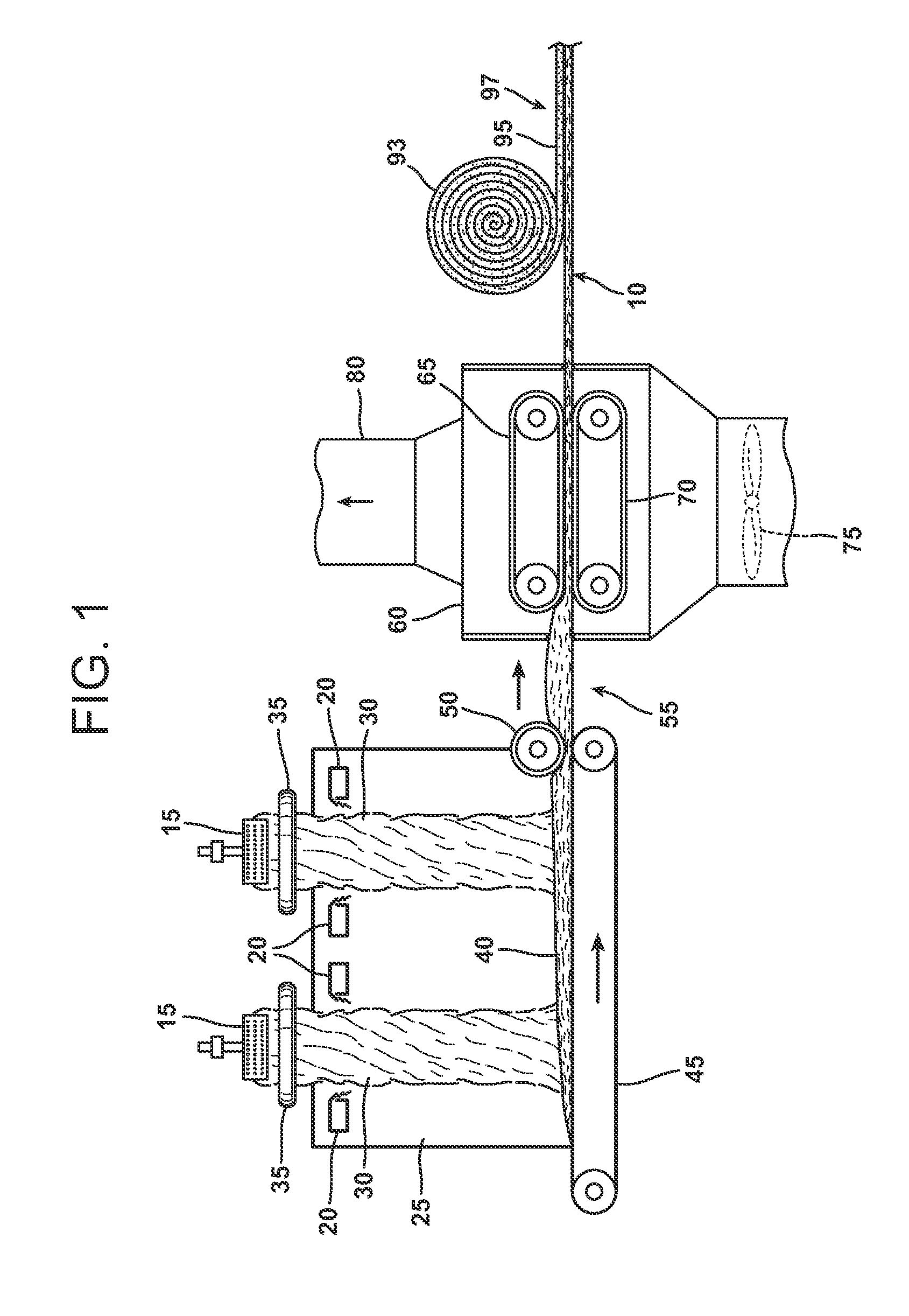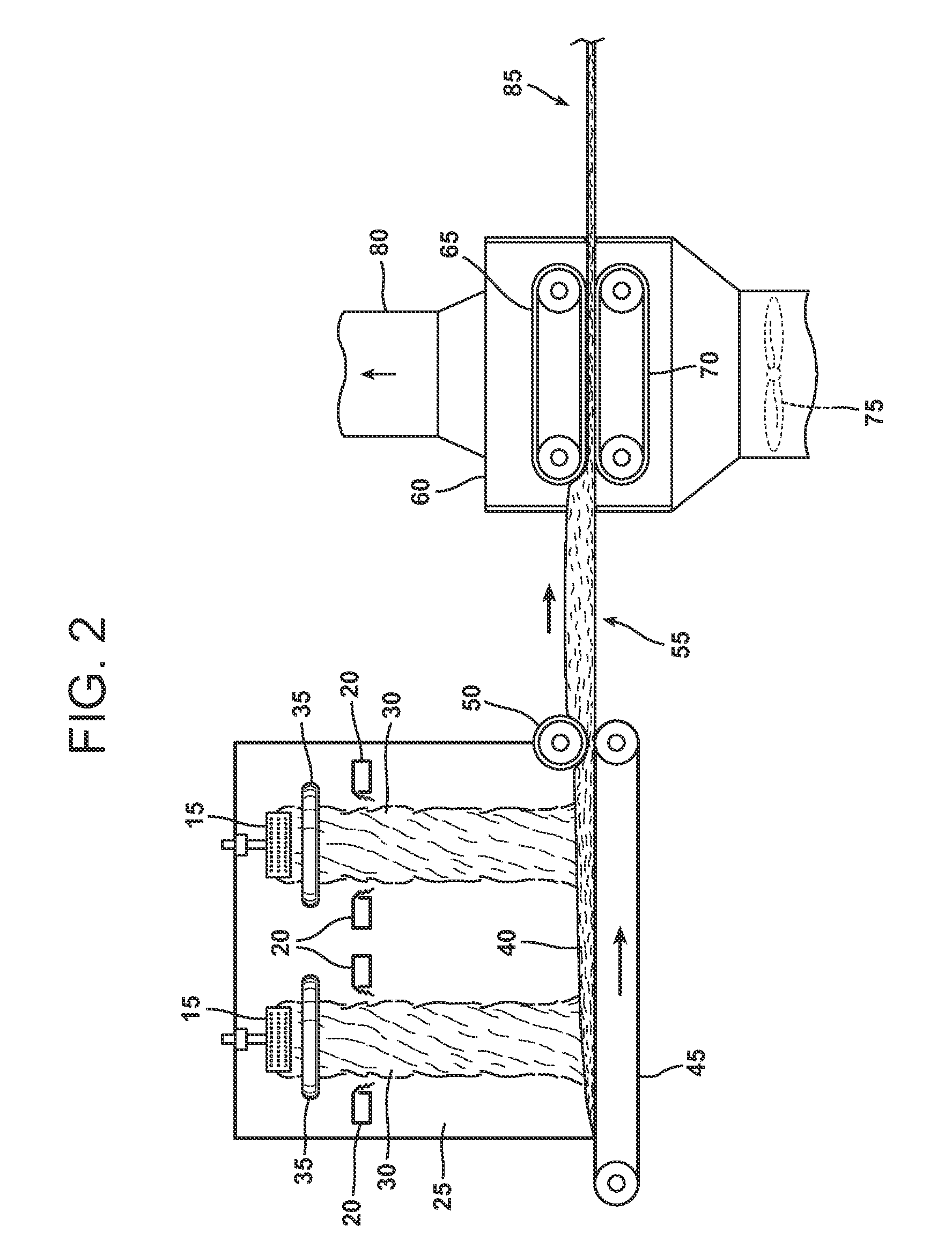Bio-based aqueous binder for fiberglass insulation materials and non-woven mats
a bio-based, fiberglass insulation technology, applied in the direction of other chemical processes, weaving, adhesive types, etc., can solve the problems of inability to use formaldehyde scavengers in general, unstable urea-extended resoles, and inability to meet the needs of workers, so as to improve worker safety, reduce the emission of formaldehyde from insulation products, and low cost
- Summary
- Abstract
- Description
- Claims
- Application Information
AI Technical Summary
Benefits of technology
Problems solved by technology
Method used
Image
Examples
example 1
[0059]A 20% stock dispersion of soy flour protein in water was prepared with the addition of a small amount of sodium bisulfite to aid in the dispersion. A portion of the protein stock dispersion was mixed with citric acid and tannic acid and further diluted with water to achieve a 22% solids binder mixture containing 71% protein, 23% citric acid, and 6% tannic acid. The binder composition was subjected to a curing test performed by Dynamic Mechanical Analysis (DMA). As illustrated in FIG. 4, the modulus curve demonstrated curing similar to that of standard phenol-formaldehyde binder. Fiberglass handsheets were prepared utilizing the binder composition. Good tensile strength and integrity was observed in the handsheets containing the inventive binder, as can be seen in Table 3.
TABLE 3Binder ofTensile StrengthTensile % ElongationExample 1Machine DirectionMachine Direction12%100.29450° F.12%120.30400° F.12%150.42350° F.
example 2
[0060]600 g of deionized water, 79.6 g of 20% soy flour (Prolia™ 200 / 90, commercially available from Cargill), 23.5 g of citric acid solid, and 0.3 g of 2% amino silane (A-1100, commercially available from General Electric) were mixed in a 2000 mL beaker. Additional deionized water was added to the beaker to prepare a total of 800 g of binder mixture. A fiber glass hand sheet was prepared following standard lab procedure. The hand sheet was then coated with the binder and cured in a convection oven for 3 minutes at 450° F. A statistically significant sample size was determined and the samples were measured using an Instron® machine. The average tensile strength was recorded.
[0061]Additional binders were prepared in a manner similar to that described above with respect to Example 2. The ratio of components was adjusted to achieve desired LOIs. As used in conjunction with this application, LOI may be defined as the reduction in weight experienced by the fibers after heating them to a ...
PUM
| Property | Measurement | Unit |
|---|---|---|
| diameter | aaaaa | aaaaa |
| diameter | aaaaa | aaaaa |
| temperature | aaaaa | aaaaa |
Abstract
Description
Claims
Application Information
 Login to View More
Login to View More - R&D
- Intellectual Property
- Life Sciences
- Materials
- Tech Scout
- Unparalleled Data Quality
- Higher Quality Content
- 60% Fewer Hallucinations
Browse by: Latest US Patents, China's latest patents, Technical Efficacy Thesaurus, Application Domain, Technology Topic, Popular Technical Reports.
© 2025 PatSnap. All rights reserved.Legal|Privacy policy|Modern Slavery Act Transparency Statement|Sitemap|About US| Contact US: help@patsnap.com



